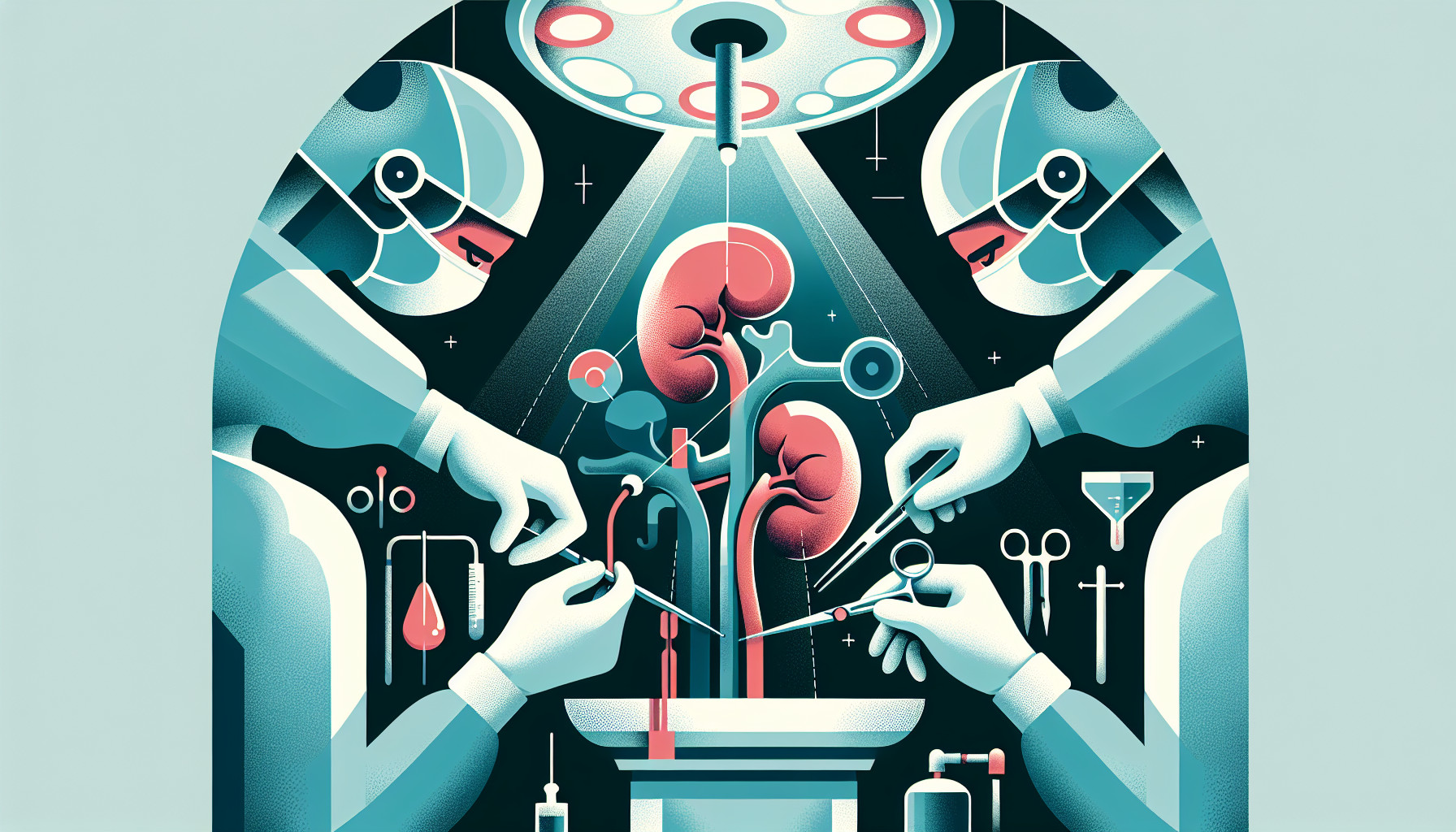Our Summary
A team of doctors successfully removed a cancerous kidney from an 85-year-old woman. They did this using a new technique which allows them to trap the organ inside the body and a new device that can cut up tissue into small pieces. This made it possible for them to remove the kidney, which weighed 190 grams, through a very small incision (11 mm).
FAQs
- What is the significance of the newly devised method for intra-abdominal organ entrapment in laparoscopic nephrectomy?
- How did the use of a laparoscopic tissue morcellator facilitate the removal of the kidney through an 11 mm incision?
- Can a laparoscopic nephrectomy be performed on older patients, such as the 85-year-old woman mentioned in the article?
Doctor’s Tip
One helpful tip a doctor might tell a patient about laparoscopic nephrectomy is to follow the post-operative care instructions carefully, including taking prescribed medications, avoiding heavy lifting, and attending follow-up appointments to monitor recovery and ensure proper healing. It is also important to stay hydrated and eat a healthy diet to support the healing process. If any unusual symptoms or complications arise, it is important to contact the doctor immediately.
Suitable For
Patients who are typically recommended for laparoscopic nephrectomy include those with kidney tumors, kidney stones, kidney cysts, or other benign or malignant conditions affecting the kidney. Laparoscopic nephrectomy is often recommended for patients who are in good overall health, have a tumor that is small enough to be removed laparoscopically, and do not have severe obesity or other conditions that may complicate the surgery. Additionally, patients who are looking for a less invasive surgical option with faster recovery times may also be good candidates for laparoscopic nephrectomy.
Timeline
Before laparoscopic nephrectomy:
- Patient is diagnosed with a tumor in the right kidney.
- Patient undergoes pre-operative evaluations and tests to assess their overall health and suitability for surgery.
- The surgical team discusses the procedure, risks, and benefits with the patient.
- Patient is instructed on pre-operative preparation, such as fasting and medication adjustments.
During laparoscopic nephrectomy:
- Patient is brought into the operating room and given anesthesia.
- Surgeon makes small incisions in the abdomen for the laparoscopic instruments.
- Laparoscope is inserted to provide a visual of the kidney and surrounding tissues.
- Surgeon uses specialized instruments to carefully remove the tumor-bearing kidney.
- The kidney is placed in a tissue morcellator and delivered through a small incision.
- The incisions are closed and the patient is taken to the recovery room.
After laparoscopic nephrectomy:
- Patient wakes up in the recovery room and is monitored for any complications.
- Pain medication is given to manage post-operative discomfort.
- Patient is encouraged to walk and resume normal activities as soon as possible.
- Follow-up appointments are scheduled to monitor recovery and assess the effectiveness of the surgery.
- Patient may receive further treatment, such as chemotherapy or radiation, depending on the pathology of the tumor.
What to Ask Your Doctor
- What are the potential risks and complications associated with laparoscopic nephrectomy?
- How long is the recovery period after laparoscopic nephrectomy?
- Are there any long-term effects or complications to be aware of after the procedure?
- Will I need to make any lifestyle changes or adjustments after the surgery?
- How will my kidney function be affected after the removal of one kidney?
- Will I need any additional treatments or follow-up care after the surgery?
- What is the success rate of laparoscopic nephrectomy for treating kidney tumors?
- Are there any alternative treatment options available for my condition?
- How experienced are you in performing laparoscopic nephrectomy procedures?
- Can you explain the specific technique you will be using for my laparoscopic nephrectomy procedure?
Reference
Authors: Clayman RV, Kavoussi LR, Soper NJ, Dierks SM, Meretyk S, Darcy MD, Roemer FD, Pingleton ED, Thomson PG, Long SR. Journal: J Urol. 2017 Feb;197(2S):S182-S186. doi: 10.1016/j.juro.2016.10.074. Epub 2016 Dec 21. PMID: 28012757
